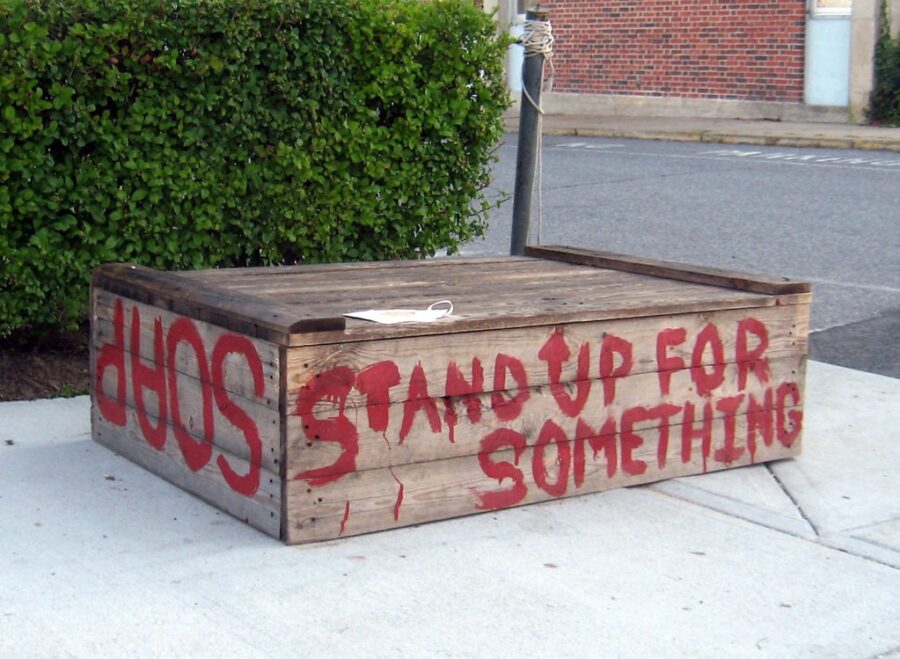Too Woke: How To Give Yourself a Break From Advocacy in 6 Steps or Less
A heart that always understands also gets tired
So, you belong to a community, microcosm, or simply have a trait that is uncommon. And you run into someone who is curious about said community, microcosm, or uncommon trait. But today is just not the day for careful explanation. Totally fair. Sometimes the climb up onto the soapbox is just too steep a climb. Here’s how to gently sidestep any conversation you don’t feel like getting into today with all the finesse of a nonpartisan politician.
Step One: Be Selfish
Not wanting to answer a question you have gotten many times before does not make you a bad person. You are allowed to put yourself first, you are allowed to prioritize your emotional and/or mental health, and you are most definitely allowed to say no. Be it because you’re busy, have too much going on that day, or simply aren’t feeling it, remember that you do not have to do anything you don’t want to. Ride that self-care wave for as long as you need to. There is no shame in taking time for yourself, especially if you are constantly the one educating folks on the topic. If you continue to give away your energy, time, and emotional labor, then there will be nothing left for you. Allowing yourself to be selfish is crucial to cultivating growth within. Don’t feel guilty for putting yourself first.
Step Two: Say No
This is the hardest step because it’s the one word people hate to hear. Dress it up or down as much as you like as long as you are clear, polite and firm. Use a simple, “Yes I am x, y or z but I’d rather not talk about it at this time,” or something along those lines to establish that hard no. Beating around the bush or over explaining why you can’t is not necessary. The more you muddle the waters dancing around it, the more they will try to get out of you. If you are faced with the dreaded follow up, “why?” don’t panic. Step Three is a good way to pacify the unruly.
Step Three: Use A Lifeline
Phone a friend! Or an actual spokesperson! Or champion of the cause! We’re both lucky and doomed to live in a time where somewhere out there, someone is making a living off of saying what they think. Social media influencers are everywhere, but some are using their powers for good. Let the person approaching you know of this advocate and their body of work as a way to relieve the pressure on you.
This step isn’t exactly necessary; you don’t owe anyone anything and you can say no and leave it at that. This is a way to say no while still giving them someone to direct their questions to. It’s a good way to get out of conversations where the person is hounding you for answers. By doing this you also move the responsibility to them, giving them the choice to seek out the answers they want. There are so many resources to learn the truth about communities, and I know in the age of fake news and filter bubbles it’s hard to trust that they will find the right answer. By having someone in mind, you can still spread knowledge without placing yourself at the front lines.
Step Four: Offer Other Resources
Try to find a hub of information, be it a brick-and-mortar center or website garnered towards awareness. If they are truly interested in learning about the community and want to become an ally, then this shifts the responsibility to them. This also will give them different views and opinions, which are vital to any newcomer. It gives them the freedom to form their own opinion. Ultimately, the best thing you can do for someone with questions is to give them the tools to find the answers themselves. Spoon-feeding and handholding might lead to the wrong things, even with the best intentions. Again, we’ve hit the extra credit stages of the How-To, simply offering solutions and reassurances to those who really beat themselves up over not answering the call to educate the masses every time the phone rings.
Step Five: Check In With Yourself
Life is hard when you feel like you’re constantly being reduced to your individual traits instead of simply being seen as a person. Identifying with and relating to your community is different than a label. Labels can get messy and hurtful, make sure you are taking the time to understand how they make you feel.
You are more than the sum of your parts, more than any paltry personality trait, or anything that has happened to you. You are a complex human being and its understandable to get tired of being reduced to the same thing over and over. It’s taxing and it’s dehumanizing. Don’t be ashamed of sitting this one out and taking the steps you need to soothe yourself.
Step Six: Remember You Aren’t Alone
The responsibility does not fall solely on your shoulders. There are more than 7 billion people on earth — the odds of you being the only one who can educate this person on the topic are slim to none. Seek out your peers, community, advocates; not for the person who approached you but for yourself.
This step is vital for those who are in situations where you actually are the only one of your kind, be that because of the town you live in or place you work at. When folks automatically default to you it can be especially draining. Personal connections that you trust can help you immensely, though good times and bad. Having someone you can celebrate with, cry with, be you with is empowering.
The ability to be your authentic self is so healing, and essential to soothing the burnout advocacy can bring. These connections also put things into context — often we don’t realize how heavy the burden is until someone offers to help. You aren’t alone, and it isn’t solely up to you to change the world. Belonging to a community does not automatically make you an advocate. It’s a part of who you are but is not all you are.










